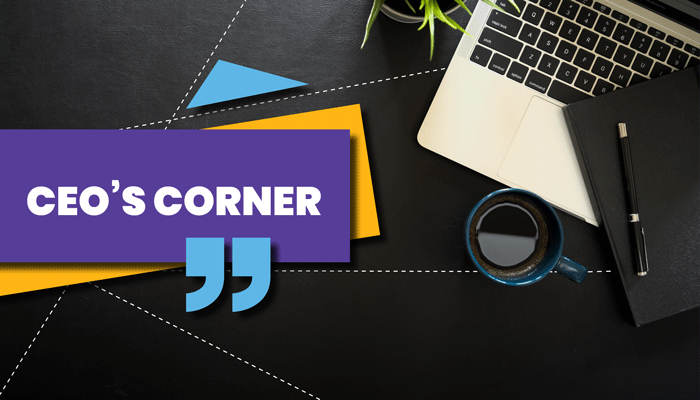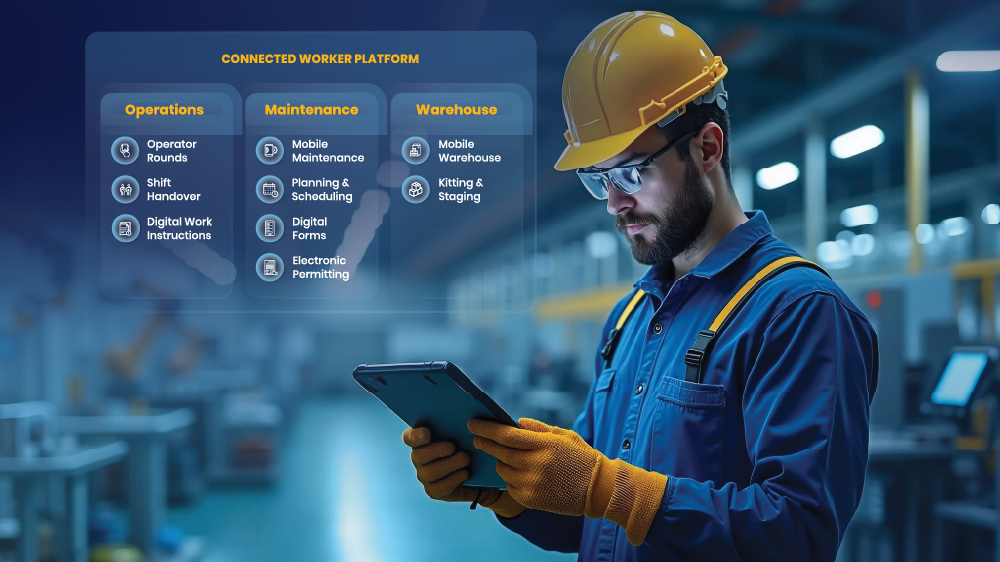COVID-19, Manufacturing Skills Gap and the Connected Worker

By 2050, the world population is estimated to grow from 7.6B to 9.6B. This growing population will boost consumer demand across all industries. From construction, to food & beverage, to life sciences, oil & gas, and many more industries. This growing demand means that we expect to see investments into production and manufacturing facilities, creation of many new jobs, and a positive impact to the economy. Ultimately this positive impact will lead to hiring of many new front-line workers to support these operations.
These new opportunities create new sets of challenges in the COVID-19 Era. In this blog, I highlight four challenges that business operations will face to keep their operations running.
- Digital Natives - The New “Front-Line” Worker - While the above growth in population is the good news, the bad news is that many of these new front-line workers are born digital natives. They expect everything digital in their life and we expect to see a talent war with these new front-line workers having a choice in where they choose to work. The new front-line workers will be expected to perform highly complex jobs and processes with minimal human interactions in the COVID-19 Era. Big fat binders, walkie-talkies and pages of work instructions will no longer even be an option. Availability of experts to hand-hold these front-line workers is also rapidly diminishing and with COVID-19, it even makes things harder to keep machines running and spare parts available at the right time and at the right place.
- Disappearance of Tribal Knowledge - The tribal knowledge that exists with your expert front-line workers is expected to disappear in relatively short time. The average age of front-line workers is at 44.1 years and it's estimated that these workers will soon start to leave the workplace, creating a huge skills gap and tribal knowledge disappearance. This aging workforce, coupled with a tight labor market, has resulted in critical skills and talent gaps impacting the ability of asset-intensive industries to recruit, train and retain a workforce with suitable competencies. The Manufacturing Institute estimates that because of the skills gap 2.4 million job openings in manufacturing will likely go unfilled through 2028, representing half of all open positions.
- Shrinking Profit Margins - The growing pressure on profit margins and talent challenges is felt across all asset-intensive industries, such as CPG, Life Sciences, Oil & Gas, Utilities, Mining & Metals, Chemicals, and Industrial Manufacturing. This pressure doesn’t just stem from the rising cost of people; these industries are facing increasing demand from customers to deliver higher value for a lower cost.
- Worker Safety - During the COVID-19 crisis, we have seen many business operations grind to a complete standstill, impacting production and revenue streams. New safety procedures, risk assessments and contact tracking will become an integral part of running an operation without interruption. Practicing “Social Distancing” requires context of worker health and their location within a plant or a site. The old ways of working and implementing standard operating procedures on paper will not work in the COVID-19 Era.
Recently Forbes wrote an article asking “Is now the moment for the connected worker platform?” It's very critical for companies to start thinking about a “Connected Worker” strategy in the COVID-19 era. Companies need to start thinking of how digital transformation can help them combat these macro trends and challenges. Simply delivering a mobile app for your front-line worker is not the right solution.
You need to be thinking of a connected worker strategy that puts your front-line worker at the center of all your disparate systems and they are converted into a "Connected Worker." The definition of a "Connected Worker" is to converge different technology trends such as Cloud, mobile, web, chat, social, wearables, AI/ML, and more to change the entire working life of your front-line worker. As a simple example, it's important that you not only think of enabling your front-line workers with important ERP operational data, but also empower them with step-by-step guided work instructions that help them get the job done faster, better, cheaper and safer.
You also need to be thinking about the growing population from 7.6B to 9.6B and the consumer demand. If you are not already thinking about bridging the skills gap between a new front-line worker and an experienced front-line worker, you may soon end up in an operational crisis that may impact your production and revenue streams.
Best-in-class Connected Worker Platforms will offer you the technology for experts to guide new front-line workers remotely. We expect to see a trend where more and more expert workers will be used to help four to five new front-line workers from the comfort of their homes. Remote guided assistance and over the shoulder coaching with smart glasses and a two-way video conferencing experience will not just be a "cool technology," but will be a necessity in the next two to five years.
You need a long-term strategic partner that can help you deliver such Connected Worker experiences to help combat the macro trends that companies are expected to witness in the near future. At Innovapptive, we wake up each day, inspired and motivated to tackle the above challenges. We take pride in calling ourselves the first Connected Worker Platform that digitizes the last mile activities of the front-line worker into SAP. We engineered our platform from ground up for SAP and IBM Maximo. We know we can help more than 10 million front-line workers in the COVID-19 Era and we are up for this challenge.
We are hosting a roundtable webinar and a few sneak peeks of our Connected Worker platform on June 3rd, 2020. I invite you to register for this webinar by clicking on this link.

See It In Action
Schedule a personalized demo to see how our solutions can help your business thrive.
- 29-09-2025
Your Ultimate Guide to Connected Worker
In the rapidly evolving industrial landscape, maximizing plant efficiency and ensuring optimal...
- 20-08-2025
Building the future of Industrial Operations with Innovapptive and AWS
Most manufacturers have already gone digital. Yet business outcomes haven’t moved in step. Many...
- 22-04-2025
The $3.6B Unlock: Solving the Chemical Industry’s Labor Crisis and EBITDA Pressure in One Move
“Constraints don’t slow innovation—they force it.”


